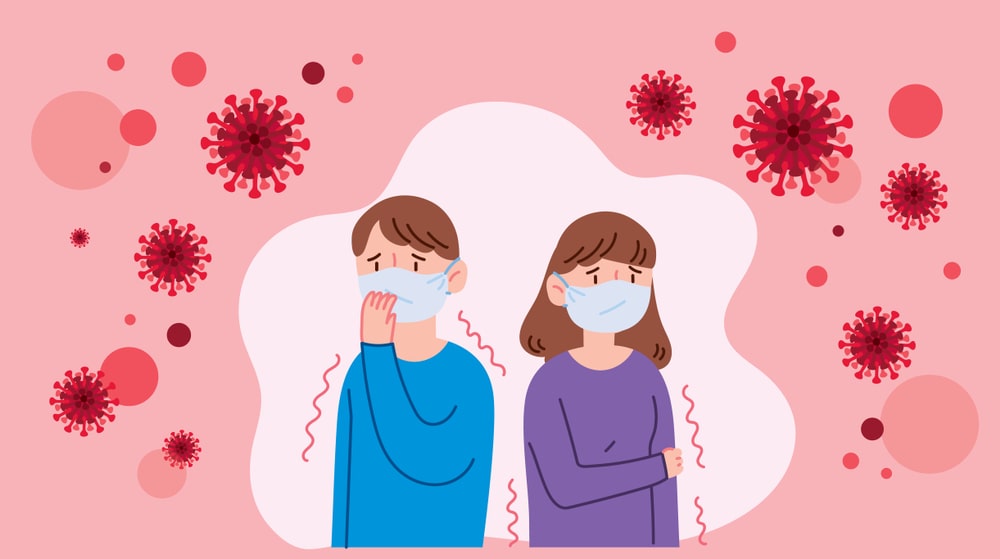Definition: A severe infection that prevents normal respiratory function is an acute respiratory infection. It typically starts in the nose, trachea (windpipe), or lungs as a viral infection. It can spread to the entire respiratory system if the infection is not treated. Acute respiratory infection prevents oxygen from being absorbed by the body which can lead to death. People suffering from this disorder urgently need medical assistance.
Acute respiratory infections are often contagious, meaning that they can spread from one person to another. The disorder is somewhat common. It is especially dangerous for infants, older adults, and individuals with deficiencies of the immune system.
Acute respiratory infections kill an estimated 2.6 million children annually worldwide, according to the World Health Organization (WHO).
Acute respiratory infections, with a wide variety of combinations of symptoms and signs, can cause inflammation of the respiratory tract anywhere from the tube to the alveoli. Depending on the site of infection, acute respiratory syndromes are also categorized by clinical syndromes and are referred to as Acute Upper Respiratory Infection (AURI) or Acute Lower Respiratory Infection (ALRI).
- AURI: Infections of the upper respiratory tract include; a common cold, pharyngitis (sore throat), and ear inflammation.
- ALRI: Epiglottis (inflammation of the epiglottis-the flap at the base of the tongue that prevents food from getting into the trachea, windpipe, laryngitis, bronchitis, pneumonia) is a lower respiratory tract infection.
1. Upper Respiratory Tract Infection: It is commonly considered that the upper respiratory tract is the airway behind the vocal cords. Typical upper respiratory tract diseases include; tonsilitis, pharyngitis, otitis media, some forms of influenza, and the common cold. This affects the nose, sinuses, pharynx, and larynx.
2. Lower Respiratory Tract Infection (LRIs): The trachea (windpipe), bronchial tubes, bronchioles, and the lungs compose the lower respiratory tract. Generally, lower respiratory tract infections are more serious than upper respiratory infections. Of all infectious diseases, lower respiratory infections are the primary cause of death. Bronchitis and pneumonia are the two most common LRIs. Influenza affects both the upper and lower respiratory tracts, but more harmful strains tend to bind to receptors deep in the lungs, such as the particularly pernicious H5NI.
Epidemiology
Table of Contents
- Agents: Microbes, Bacteria, Viruses.
- Host: Genetic susceptibility, Immunizations.
- Environment: Sanitation, Social context, Health care availability.
Agents/Factors
- The microbial agents that cause acute respiratory infections are various and include; bacteria and viruses.
- They often exhibit within species a wide variety of antigenic types.
- Disease occurrence is determined by whether a secondary bacterial infection occurs or not.
Host Factor
- Children of preschool and school age.
- Nutritional status of children.
- Immunization status.
Environmental Factors
- Crowding, poverty, poor access to health care and immunizations
- Malnutrition
- Daycare
- Environmental tobacco smoke exposure
- Air pollution
- Indoor air pollution
- Aspirated foreign bodies
- Pieces of toys, nuts, pieces of food, cut corners of plastic milk bags.
Incubation Period
5 to 7 days.
Modes of Transmission
1. Airborne route transmission: Airborne transmission is the spread of infectious agents. as aerosols that usually enter the respiratory tract. Unlike the infectious droplets, these tiny particles can remain suspended in the air for long periods and travel long distances. Airborne transmission occurs by particles that are suspended in the air. There are two types of particles L.e. dust and droplet nuclei.
2. Contact transmission:
- Direct contact transmission: It transfers from person to person of micro-organisms through actual physical contact.
- Indirect contact transmission: Indirect transmission occurs when a susceptible person comes in contact with a contaminated object.
Symptoms of Acute Respiratory Infections
The symptoms of upper acute respiratory infections and lower respiratory are different.
Symptoms of Upper Respiratory Infections
Cough, Fever, Running nose, Nasal congestion, vomiting, Body Pain, etc. Symptoms of upper respiratory infection typically last from 3-14 days; an alternative diagnosis such as; sinusitis, asthma, pneumonia, or bronchitis may be considered if symptoms last longer than 14 days.
Lower Respiratory Infection
Although often used as a synonym for pneumonia, other forms of infections; including lung abscesses and acute bronchitis, may also be affected.
Symptoms include; shortness of breath, fatigue, tiredness, and fever. Several signs are typical of infections in the lower respiratory tract. Bronchitis and Edema are the two most common diseases of the lower respiratory tract.
Prevention and Control of Acute Respiratory Infection
- Avoiding respiratory tract irritation by indoor air pollution; such as smoke from cooking fires; avoiding the use of dried cow dung as indoor fire fuel.
- Feeding children with ample quantities of diverse and nutritious food to sustain a powerful immune system.
- Immunization of all children with an extended regular immunization program.
- The best way to monitor acute respiratory infections is to improve primary medical care facilities and establish improved strategies for the early detection, treatment, and prevention of acute respiratory infections.
- Educating mothers about pneumonia and the result of the disease is decided by compliance with medication and finding appropriate care when the child suffers.
- The incidence of mortality due to pneumonia is decreased if adequately treated.
- Control the spread of respiratory bacteria by informing parents to avoid contact with their children and patients who have acute respiratory infections to the greatest degree possible.
- By reducing the reservoir of infection in the population and increasing the degree of herd immunity, immunization also improves control.
- People with acute respiratory infections should cough or sneeze away from others, keep a cloth in their nose and mouth while coughing or sneezing to catch the airborne droplets.
Make sure you also check our other amazing Article on : Severe Acute Respiratory Syndrome
